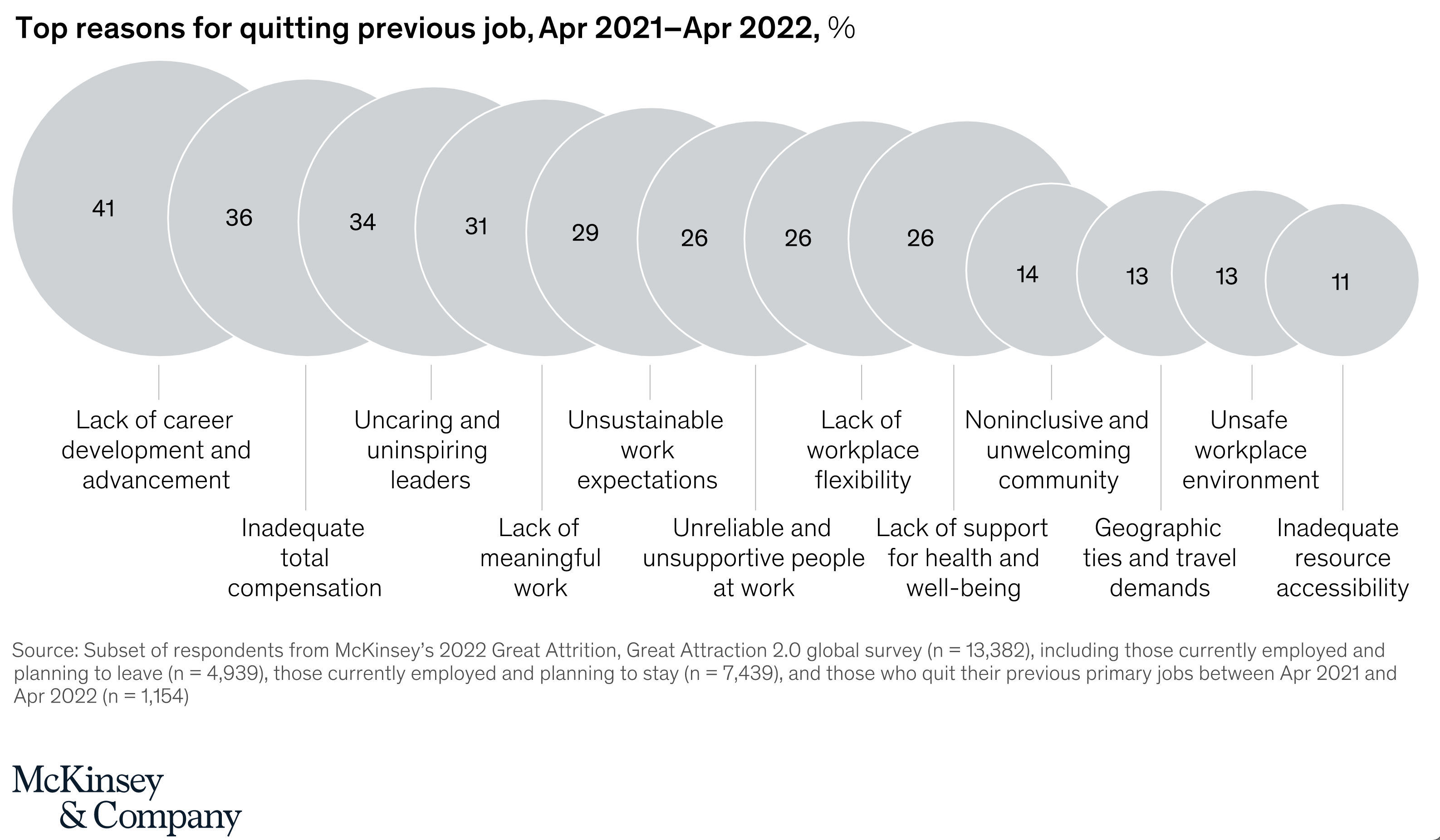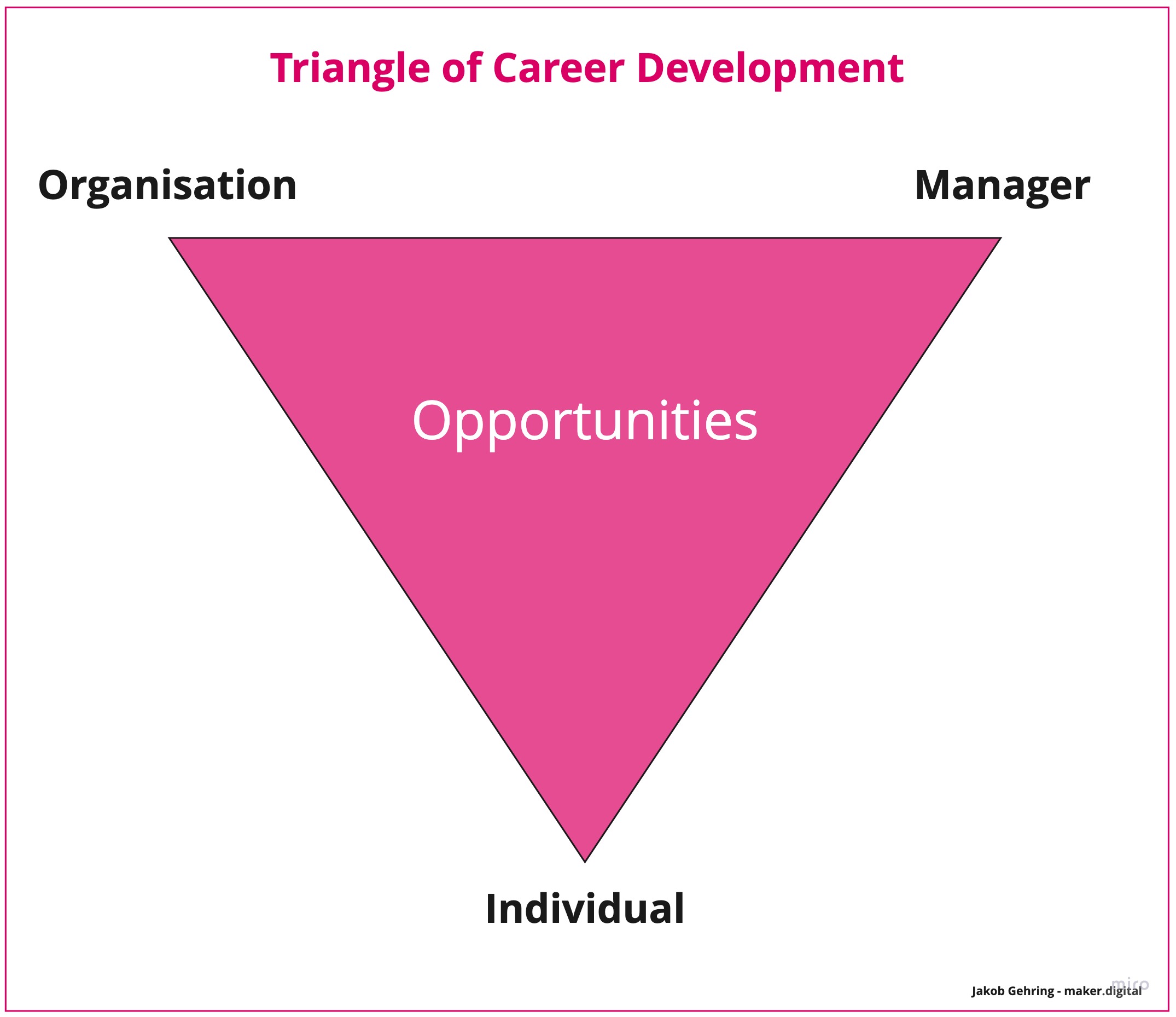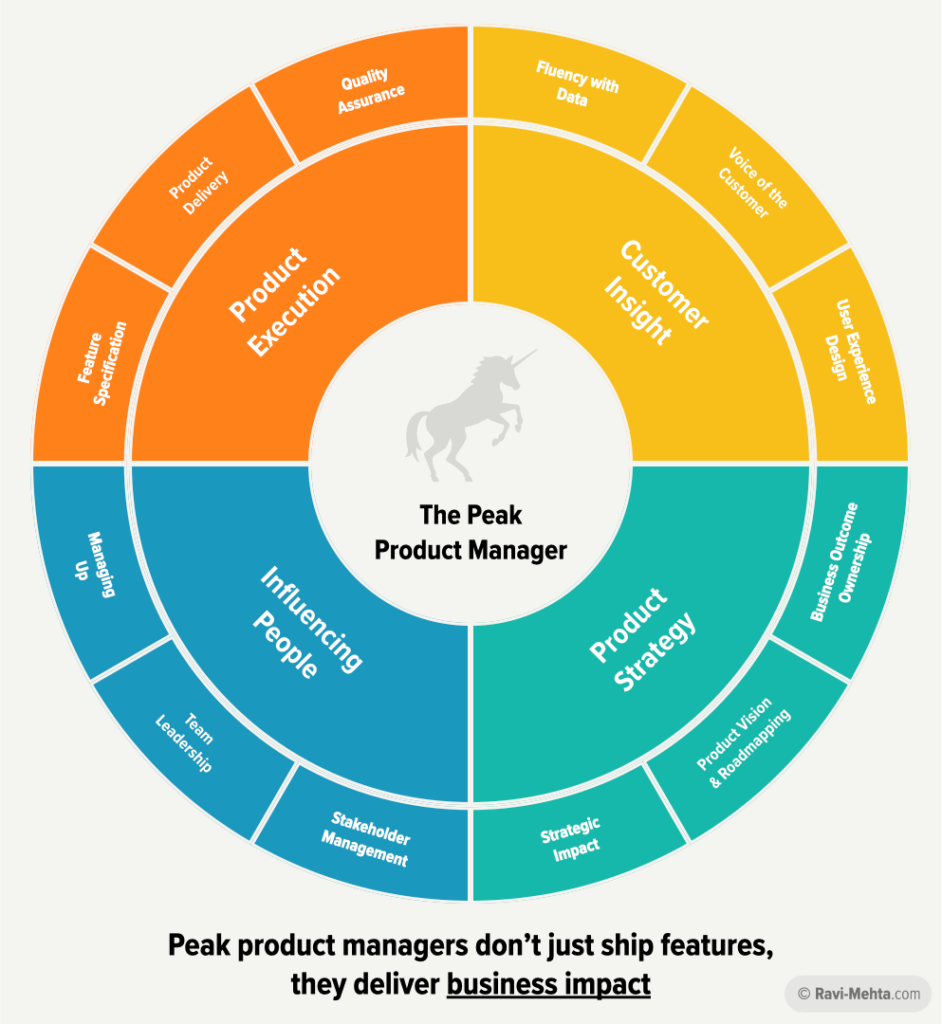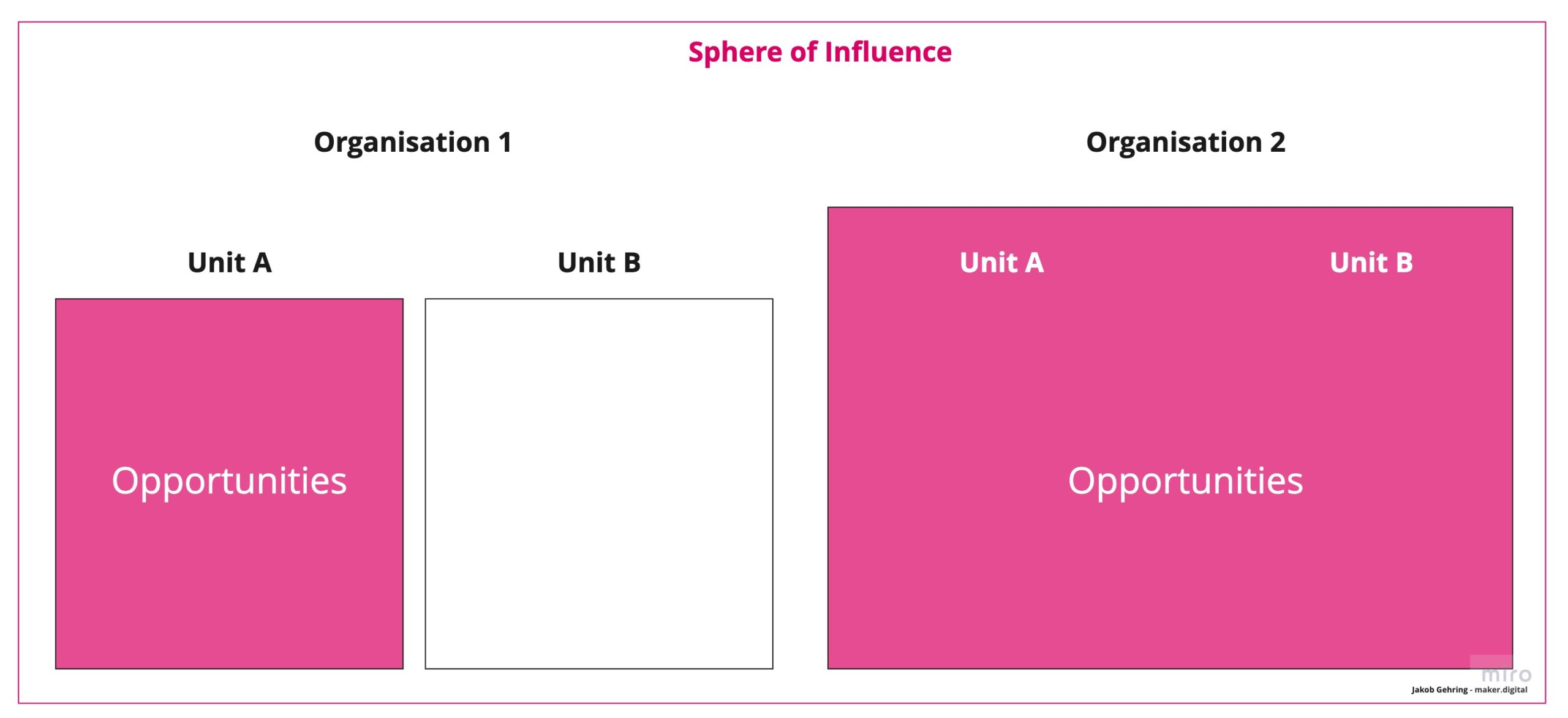
In my two decades of work experience, I had a few moments to say goodbye. There are many reasons why someone feels the need to change the workplace.
Independent of the reason, it comes down to the following question Tanja Lau from the Product Academy is raising. “Will I be able to reach the next milestones in my life in this company or am I wasting my potential?”.
Here are my thoughts on career development.
Contents
Comfort vs Adventure
Changing the workplace comes with many uncertainties. In the best cases, you will leave a comfortable position with a salary you can live on and colleagues who support your way forward. You probably know your place and how to progress. You know the tools available and the processes to follow. You understand the company’s goals and what role you play in it.
Still, there is the urge to go out and leave all of this behind. You will meet new colleagues and be part of a different org structure. An organism you will need to learn to understand. Change is everywhere, the product, its users and the goals you will try to achieve. You can certainly do your research before taking on the new journey. Nevertheless, many aspects will stay unknown. It’s an adventure and a high-risk experiment.
When looking at recent research done by McKinsey, the top two reasons for quitting are the “lack of carrier development” (41%) and “inadequate total compensation” (36%).

Chances of Increased Compensation
The question of compensation has a simple factor, in my opinion. Do I feel that I am compensated fairly for the work I do? People like me working in digital products, especially engineers, designers and product managers, have reached a level of compensation that surpassed the minimum objective expectation of fairness compared to other professions and industries.
Especially in the last year though our industry saw a massive increase in salaries offered and people want to benefit from the market development. Consider the result of the O’Reilly – 2022 Cloud Salary Survey , which says that “by staying with their current employer, an employee may
get an annual salary increase of 4%. But if they change jobs, they
might get a significantly higher offer—20% or more”. With a current inflation rate of 9.8 per cent in Europe, the only way to have an actual wage increase is through a job change.
That and the new work movement, including full remote work options, make a job change highly interesting. Increased compensation can also mean moving to an area with lower living costs.
Career does not equal development and vice versa
While the topic of compensation is easier to comprehend, career development has many facets. For some, a career means reaching a certain level or title within a given timeframe or doing bingo with FAANG companies.
For others, it’s the ability to learn and improve their skill sets. In addition to the personal aspect, you have multiple dimensions that play a crucial role in someone’s personal and professional development. Indeed, development progress does not necessarily mean that you will make another step in your career. In the end, it comes down to your individual progress, the ability and support of your manager and the organisational setup to open up the opportunities that allow you to progress in your career.

The individual is the core
Career development starts with the individual. You cannot grow and progress if you do not want to learn and improve. That’s why the entire weight of my “Triangle of Career Development” lies on the individual. On the other hand, you have to reach out to your manager and the organisation to unlock the range of opportunities.
I firmly believe that people have room for improvement on any seniority level. Ravi Mehta wrote a wealthy article on product manager competencies in which he describes in detail what skill each seniority level should master. With honest self-reflection, you can identify your gaps and start working on the skills you’ll need to master the next step in your career.

Despite common skills, there are other areas you can explore to enrich your knowledge. The type of product work you do, the kind of product you work with and the industry you work in create a unique combination of experience and knowledge.
First, you can change the type of product work you do. Product-market fit, feature, scaling, or growth work require different skills and a different focus. For example, if you worked for multiple years helping to build startups, you could start working in a mature company on scaling issues.
Second, look at the kind of product you work with. Business-to-consumer (B2C) is different from business-to-business (B2B) focussed. If you have worked with a web-only product, you could find your next role working on a mobile app. E-commerce, marketplaces, gaming, and consumer or enterprise apps benefit from proper product management. Still, they require extra attention to detail as your target audience will have different psychology, or you’ll have particular technological constraints or opportunities.
Third, the industry of your product matters as well. Even though the real estate and automotive markets look similar with infrequent high-value transactions, they are incredibly different. The way you purchase a vehicle vs buying a house, selling your car vs renting an apartment to someone. Those examples tell other stories about user problems that you must address in their unique way.
As you can see, each individual stands in front of countless combinations in product management. Find the one that interests you the most and start to learn.
The manager as a mentor
I often hear that the regular 1:1 sessions between managers and direct reports are their time. I think this approach is flawed.
Above all else, the Product Leader’s most crucial role is to deliver impact to the business.
Reforge Product Leadership program
A manager depends on her directs to execute the strategy and reach the goals to deliver impact. For this, we need to have a bidirectional conversation. Successful execution is based on having the right skills for the job to be done in the team.
The manager must identify gaps in her team and specifically with each individual. In the best case, a manager can take over the mentorship for her direct reports and help advance their career development. Here again, the product management competencies come into play. They offer various options to improve the skills based on what the direct report wants and the manager’s needs.
Sometimes, the manager will identify gaps in her knowledge or experience. As a manager’s job is to help her team achieve success, it is her job to ensure each individual is on track and getting the help they need to succeed, even though this means stepping aside and finding other mentors.
Essential for any individual is a manager that cares and takes the time. Thirty minutes every two weeks is not enough to work on skills, discuss roadblocks, align on strategy, defining the following steps to amplify the work within the company.
The organisation sets the constraints
At last, we must consider the organisation when looking at the possibilities for proper career development. The organisation sets the constraints, and I define the organisation more broadly, including its product.
Every person has a specific sphere of influence. For a product manager, it is typically the cross-functional team, their peers and the domain the individual contributor is working on. The manager can open up a broader range and extend the influence only to a particular degree, as every individual, including the manager, is part of an organisation.
We can identify some constraints quickly. For example, if the product your company sells is a sole consumer-facing app, you will not be able to work on a B2B product. As mentioned, products come in many flavours, and so do organisations. Besides explicit constraints based on the business model, the org structure can pose a challenge.

Depending on the organisational model, you can move more freely between areas of interest within your company. Organisations with strict separation of units limit the range of opportunities as they demand a higher effort in organisational change.
Let’s say you build two units, one that takes care of user activation and another that will tackle retention. A product manager who wants to increase the influence from activation to include retention also needs to span two units consequently. The question of reporting line will come up very quickly, with this again goals, strategy and mentorship.
Similar to horizontal opportunities, we face limitations with vertical development. Let’s assume you work in a startup with one product lead and are one of the two product managers working with the lead. Will you be able to become a product lead in that startup and manage others? Only if the organisation changes.
It’s time for a change
Career development is a highly personal and unique procedure with many adjusting elements. Money, title, managers and the organisation play a role in the same way as your drive and passion. Unless you work in a toxic environment, you should consider thoroughly why you want to change your company and what goals you will achieve with your next engagement.
Reaching a glass ceiling is one thing. The question is more, what do you want and expect from the new company and manager? Adam Fishman recently started a series on how to join a new company successfully. It’s worth a read.